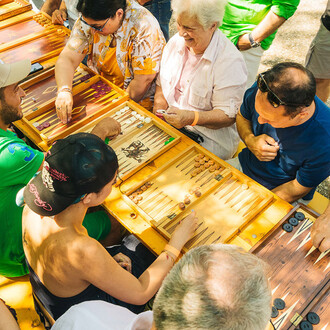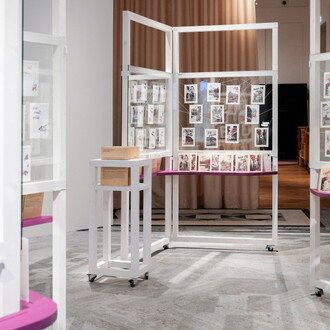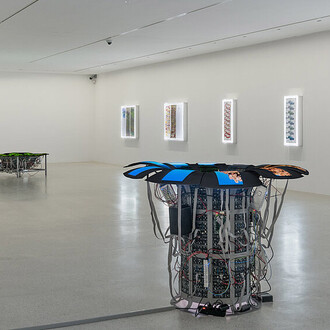Walter Pichler’s Alte Figur (Old Figure), created between 1960 and 1963, was acquired in 2018 by the Belvedere with the support of the Friends of the Belvedere, and is now part of the permanent collection. It is to be presented from November 2019 at the Upper Belvedere in the series CARLONE CONTEMPORARY. This sculpture manifests Pichler’s fundamental concept of art and the parameters of his work he consistently pursued.
Alte Figur’s stoicism, technical precision, and presentation call to mind archaic artefacts. Its lucid geometry and axial orientation will be placed in juxtaposition with the Baroque frescoes by Carlo Innocenzo Carlone. Standing, seated or lying, Pichler has provided a bed for his figure in the form of a mattress that is a base, dwelling, and throne rolled into one. The immediate connection between life and work is central to the artist’s oeuvre – he originally positioned the installation beside his own bed in his studio. Alte Figur anticipates the main theme of Pichler’s later work: a harmony between space, sculpture, material, and time.
Walter Pichler, born in 1936 in the South Tyrol, is considered one of the most important artists of the postwar avant-garde in Austria. From 1955 to 1959 he studied at the Academy of Applied Arts in Vienna, followed by stays in Paris, New York, and Mexico. Walter Pichler was a member of the group “Englische Flotte” (English Fleet) together with Hans Hollein, Raimund Abraham, Heinz Geretsegger, and Oswald and Ingrid Wiener. They championed a visionary concept of architecture and were interested in sculptural architecture and urban utopias. In 1967 MoMA in New York featured Pichler, Hollein, and Abraham in the exhibition Visionary Architecture. At the fourth documenta in 1968, Pichler presented his Prototypes; in 1977 he exhibited at the documenta 7. At the invitation of Commissioner Hans Hollein, he designed Austria’s contribution to the Venice Biennale in 1982. A turning-point in Pichler’s oeuvre came about after he bought an old farm in Sankt Martin in Burgenland in the 1970s. Gradually, he started withdrawing from the public eye and the art world and channeling all his energies into his sculptural work. He connected his objects with the farm estate at Sankt Martin both conceptually and physically by designing buildings or spaces specifically for his sculptures. Walter Pichler died in 2012 in Vienna.
















